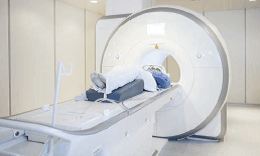Interview with: Dr. Jun Hatazawa, President of the AOFNMB
Dr. Jun Hatazawa, M.D., Ph.D., President of The Asia Oceania Federation of Nuclear Medicine and Biology.
ePatient : You have been a member of the NM community for a long time and are now the President of the AOFNMB. For those who are not familiar with the AOFNMB, can you describe succinctly its role in the field of nuclear medicine.
AOFNMB was launched in 1969 with the support of 74 member states from Oceania, West Asia, Central Asia, South Asia, South East Asia, and North East Asia to promote nuclear medicine practice in these regions. Over the past 25 years, nuclear medicine practice has exploded in Asia and there is a constant and ever increasing demand for education and expertise. Competent, well trained and properly qualified human resources are vital to further develop and continue to provide quality, efficient and safe nuclear medicine services to patients. Dedicated, harmonized and sustainable educational tools and training in nuclear medicine sciences are at the heart of the mission of the AOFNMB is such a platform to promote nuclear medicine practice in the region. Through a biennal international scientific meeting, The Asia Oceania Journal of Nuclear Medicine and Biology, the official Journal of AOFNMB, The Asia Oceania Research Initiative Network and a close partnership with the nuclear medicine industry, the AOFNMB is developing, supporting and promoting NM research and practice in the region.
ePatient : What are the most dramatic changes that you have seen in the field of nuclear medicine over the past 10 years?
When I started my PET research fellowship in 1981 at the Hammersmith Hospital, inLondon, UK, nobody could have predicted that 18F-FDG PET would be the daily imaging work horse of diagnostic oncology. In my mind, over the past decade, hybrid imaging and radionuclide therapy with radionuclide have revolutionized and challenged the field of nuclear medicine. By providing anatomic correlates to the metabolic, phenotypic and genotypic information provided by nuclear medicine studies we can now offer our colleagues precise and accurate information about their patients’ ailments. We also have the tools to asses the efficacy of their treatments. The ability to diagnose, localize and treat early recurrent prostate cancers in their very early stage with radiolabeled peptides is a very good example of precision medicine that nuclear medicine can offer. The need for an in depth knowledge and expertize in molecular biology, CT, MR and dosimetry constitute the current major challenges that we have embraced and are tackling through our various educational initiatives.
ePatient : How do you see the field of nuclear medicine evolving during the next decade?
In house cyclotrons, refined and automated radiochemistry along with highly sensitive hybrid PET/CT, SPECT/CT and PET/MR scanners, powerful computing systems and information technology along with the continuous unraveling of the molecular landmarks of diseases will will enable us to develop exquisitely specific targeting diagnostic and therapeutic agents and to pinpoint precisely their location in the body. The availability of both specific and innovative diagnostic and therapeutic radiopharmaceuticals for the diagnosis and therapy of diseases (Theranostics), particularly in oncology will enable us to deliver on the promises of molecular and precision medicine, particularly in oncology.
ePatient : To your opinion, what role do you see the Pangea-ePatient magazine play for nuclear medicine?
In contrast to medicine, surgery, radiation therapy and the other main disciplines of medicine, the field of nuclear medicine is very unique and, in general, not very well known by patients and referring physicians. We must play a major role in educating patients and colleagues about the usefulness and benefits of diagnostic and therapeutic nuclear medicine approaches and services. In Japan, we recently launched an annual educational and working conference on Theranostics which gathers patients, nuclear medicine physicians, referring doctors, industries, the Japan Radioisotope Association, and regulatory authorities. Having an educational magazine that uses all possible 21st century digital electronic plateforms like computers, tablets, smartphones and that is available 24/7 365 days a year at home, at the office and on the road to educate and share the most recent development and innovation in nuclear medicine would be a fantastic asset for the nuclear medicine profession. The Pangea-ePatient magazine promises to deliver on these premises and I am delighted to contribute to this issue and serve on its medical and scientific advisory board.




